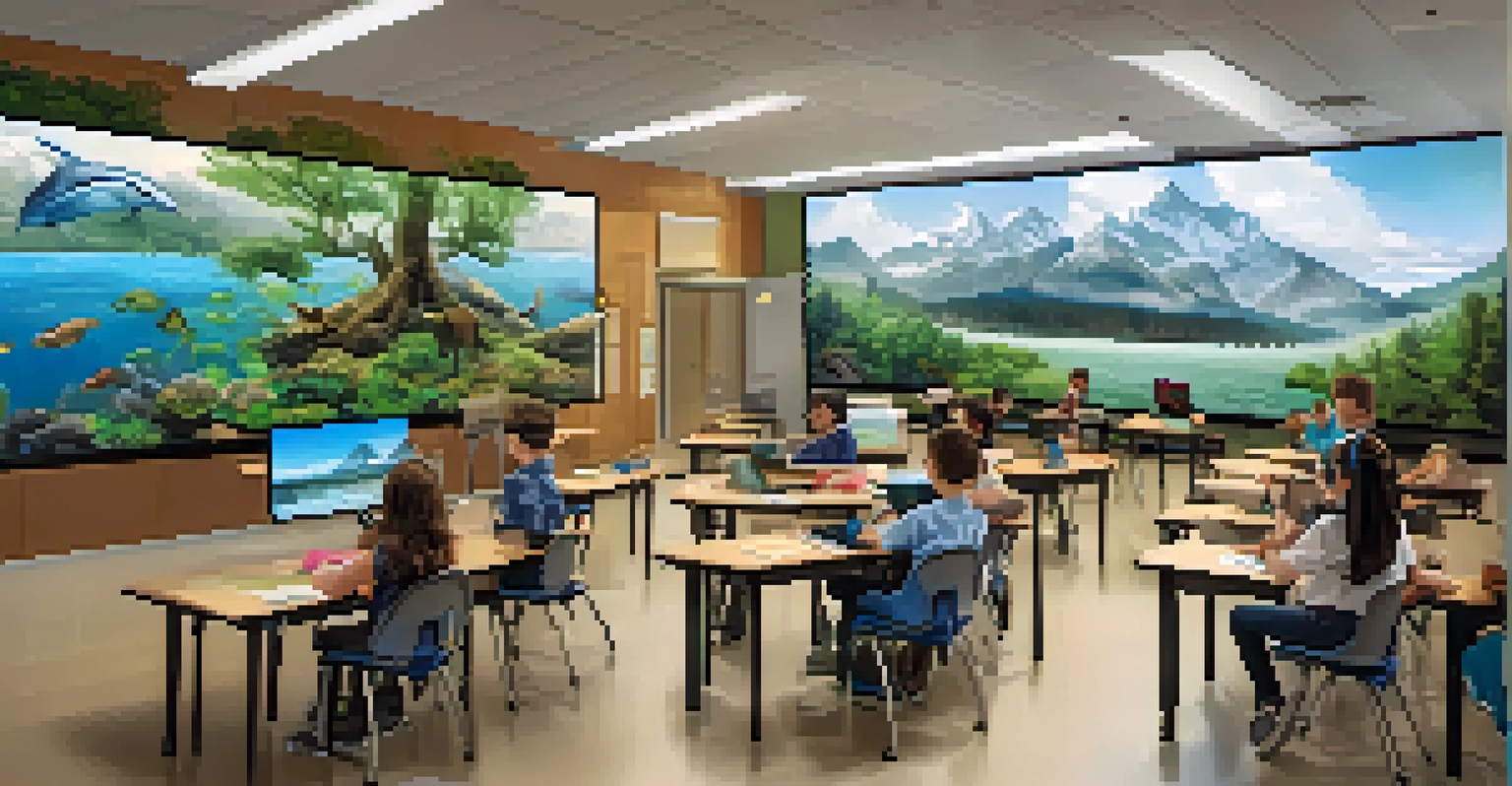Educating Tampa's Youth on Environmental Responsibility

Understanding Environmental Responsibility in Tampa
Environmental responsibility means being aware of our impact on the planet and taking steps to reduce harm. In Tampa, this involves understanding local ecosystems, wildlife, and the unique challenges our environment faces. By fostering a sense of stewardship, we can inspire young people to care for their surroundings and make a difference.
The greatest threat to our planet is the belief that someone else will save it.
Tampa's lush parks and coastal areas provide a perfect backdrop for teaching youth about sustainability. Engaging children with their local environment helps them form emotional connections to nature, which can lead to lifelong environmental advocacy. In turn, this appreciation can motivate them to adopt responsible habits, from recycling to conserving water.
Additionally, it's crucial to emphasize that environmental responsibility isn't just about individual actions; it's also about community involvement. By participating in local initiatives, young residents can learn the importance of collective efforts in protecting the environment. This sense of community can empower them to take meaningful actions that benefit both the planet and their peers.
Incorporating Environmental Education in Schools
Integrating environmental education into school curricula is a vital step in nurturing responsible citizens. By introducing concepts such as climate change, conservation, and biodiversity, teachers can equip students with the knowledge they need to make informed decisions. This education can take many forms, from classroom discussions to hands-on projects and field trips.

For example, schools can partner with local organizations to organize field trips to nearby nature reserves or recycling centers. These experiences not only enhance learning but also provide real-world contexts for students to understand their impact on the environment. Moreover, such initiatives can spark interest in environmental careers, planting the seeds for future leaders in sustainability.
Importance of Environmental Education
Integrating environmental education into school curricula equips students with the knowledge to make informed decisions and fosters a culture of sustainability.
Creating a culture of sustainability within schools also encourages students to practice what they learn. Simple initiatives, like school gardens or recycling programs, can instill a sense of pride and responsibility. When students see their efforts leading to tangible results, they are more likely to carry these lessons into their daily lives.
Utilizing Technology to Engage Young Minds
In today’s digital age, technology can be a powerful ally in environmental education. From interactive apps to online games, there are numerous resources available that make learning about sustainability fun and engaging for students. These tools can help demystify complex concepts and make them accessible to a younger audience.
Education is the most powerful weapon which you can use to change the world.
For instance, virtual reality experiences can transport students to different ecosystems, allowing them to explore the effects of pollution or climate change firsthand. This immersive approach can enhance understanding and evoke emotional responses that drive home the importance of environmental stewardship. The combination of education and technology can create a captivating learning experience.
Additionally, social media platforms can be used to raise awareness and encourage youth to share their own eco-friendly practices. By showcasing their efforts online, they join a larger community of environmentally conscious individuals. This sharing not only reinforces positive behavior but also inspires others to take action, creating a ripple effect of environmental responsibility.
Community Involvement: A Pathway to Action
Community involvement is an integral part of teaching youth about environmental responsibility. Engaging in local clean-up events, tree planting, and sustainability fairs can help children see the tangible results of their efforts. These activities foster a sense of belonging and purpose, making them more likely to continue their environmental advocacy.
Tampa has several organizations dedicated to environmental protection that offer volunteer opportunities for young people. By participating in these initiatives, they not only contribute to their community but also learn valuable skills and teamwork. It’s a win-win situation where both the environment and the youth benefit.
Community Engagement Boosts Awareness
Participating in local initiatives empowers youth to take action and fosters a sense of belonging while contributing to environmental protection.
Moreover, encouraging youth to voice their opinions on local environmental issues can empower them to take an active role in decision-making processes. Whether it's attending city council meetings or participating in community discussions, their input can lead to positive changes. This involvement reinforces the idea that every individual can make a difference, no matter their age.
Promoting Sustainable Practices at Home
Teaching youth about environmental responsibility doesn’t stop outside the classroom; it extends into the home. Parents can play a pivotal role by modeling sustainable practices, like reducing waste, conserving energy, and using eco-friendly products. These everyday actions can have a lasting impact on children, shaping their habits and attitudes toward the environment.
Involving children in household decisions, such as meal planning or gardening, can further instill a sense of responsibility. For instance, teaching them how to compost kitchen scraps not only reduces waste but also provides valuable lessons about the lifecycle of materials. These experiences reinforce the idea that sustainability is a collective effort.
Furthermore, creating a family culture that prioritizes environmental responsibility can be both fun and educational. Organizing family outings centered around nature, like hiking or visiting local farms, can deepen connections to the environment. When families engage in eco-friendly activities together, it cultivates a supportive atmosphere for learning and growth.
Celebrating Local Environmental Heroes
Highlighting local environmental heroes can inspire youth and provide relatable role models. By showcasing individuals or organizations in Tampa that are making a difference, young people can see the impact of community engagement. This recognition can motivate them to pursue their own environmental goals and understand that anyone can contribute to change.
Community events, such as awards ceremonies or speaker series, can be platforms for celebrating these heroes. Bringing attention to their achievements not only honors their work but also educates attendees about pressing environmental issues. These gatherings foster a sense of community and encourage collaboration among residents.
Role of Technology in Learning
Utilizing technology in education makes learning about sustainability engaging and accessible, helping to inspire the next generation of environmental advocates.
Moreover, sharing stories of local environmental champions through school projects or social media can amplify their message. When students learn about these role models, it ignites their passion for sustainability and encourages them to envision their own potential contributions. This celebration of local heroes cultivates a culture of environmental responsibility in Tampa.
Future Steps for Tampa's Youth and the Environment
As we look to the future, it’s crucial to continue building on the foundation of environmental education for Tampa’s youth. Establishing partnerships between schools, local organizations, and families can create a comprehensive approach to sustainability. This united front can ensure that children receive consistent messaging and opportunities to engage with their environment.
Additionally, advocating for policy changes that prioritize environmental education in schools can create a long-lasting impact. By integrating sustainability into the core of educational systems, we can prepare future generations to tackle environmental challenges head-on. The influence of informed youth can lead to more sustainable practices in communities.

Lastly, fostering a mindset of lifelong learning about the environment will be essential for ongoing progress. Encouraging curiosity and exploration can help young people adapt to new challenges as they arise. With the right support and resources, Tampa's youth can emerge as passionate advocates for a sustainable future.